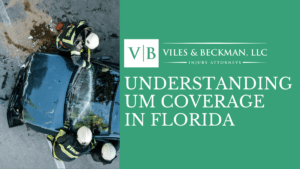
According to the National Highway Transportation Safety Administration (NHTSA), more than 25 percent of all crashes between motor vehicles across the United States are head-on collisions, the second most common type of collision. Head-on collisions are among the most dangerous of all crashes, especially at high speeds when the impact can cause severe injuries and fatalities.
The NHTSA also reports that head-on collisions occur more often in rural areas than in cities, yet this doesn’t mean you aren’t at risk of a head-on collision in or around Fort Myers. When careless and negligent drivers make poor choices behind the wheel or a medical emergency occurs while driving, other motorists can suffer serious and catastrophic injuries or death.
This guide provides information about the most frequent causes of head-collisions, injuries which might occur as a result of a head-on collision, and actions you need to take if you suffer harm or lose a loved one in a Fort Myers head-on collision. Read on to learn how an experienced Fort Myers car accident attorney can assist you with that process.
Common Causes of Head-On Collisions
Many different causes and situations might lead to a deadly head-on collision directly or indirectly. Regardless of whether driver actions are negligent, willful, or accidental, the following specific driver actions can lead to head-on motor vehicle crashes. Keep in mind that liability and causation in car accidents are challenging for lawyers, investigators, and courts to determine. Multiple causes often exist; the following causes are not mutually exclusive and may be only one part in the chain of events which ultimately results in a crash.
- Driving the wrong way. Motorists who turn the wrong way down a one-way street risk causing a head-on collision. When this happens in a larger city with lower speed limits, the results might not be as catastrophic. Yet, when a driver is unfamiliar with an area, drowsy, drunk, under the influence of drugs, and turns the wrong way on an entrance or exit ramp to a freeway or interstate, severe injury and/or death is likely. Speeds are much higher on highways and interstates. When it takes the at-fault driver some time to realize their mistake they can cause a head-on collision.
- Centerline crossover. When drivers swerve into oncoming traffic and cross the centerline, a head-on collision is likely. Drivers might cross over the centerline because they are distracted by their cell phones or other things inside or outside of the vehicle, driving under the influence of drugs or alcohol, dozing off while driving, or they have a medical emergency such as a stroke or heart attack. Poor weather conditions with bad visibility as well as poorly maintained roads might also cause a driver to swerve. Additionally, drivers who notice hazards on the road including live and dead animals, debris, or anything else in their path, might swerve to avoid these things, which can sometimes cause them to enter oncoming traffic on a two-lane highway.
- Speeding. One of the surest ways for a driver to lose control of his or her vehicle is to travel at more than the posted speed limit or drive too fast for conditions. When drivers lose control of their vehicle, it’s far more likely they will be involved in a head-on collision from entering oncoming traffic. Going too fast over a hill, on narrow roads, or while driving around curves, might also lead to a driver losing control of his or her vehicle.
- Improper passing. This dangerous driving behavior fortunately does not occur on interstates, but typically happens on two-lane highways. Some careless drivers choose to pass the car in front of them on a double-yellow line, usually associated with hills or turns. This can lead to dangerous head-on collisions because the passing car cannot usually see in front of them, especially when driving at night. Even when drivers legally pass another vehicle in front of them, they are intentionally entering the lane of oncoming traffic. Those who do not ensure it is safe to pass before doing so risk causing a head-on crash.
Expect More, Receive More: Legal Support That Feels Like Family
Injuries in Florida Head-On Collisions
Those involved in a head-on collision might suffer a wide range of injuries which depend on their location in the vehicle, the size of the vehicles involved, and the speed upon impact. When less severe head-on crashes occur, seat-belts and airbags can provide significant protection against catastrophic injury. When drivers and passengers do not wear seat belts, and/or the crash occurs at high speeds, more severe, sometimes deadly injuries occur. Some injuries commonly experienced by those involved in head-on collisions include:
Neck Injuries
Whiplash is one of the most injuries from car accidents, especially head-on collisions. When impact occurs, the neck suddenly extends and flexes, causing damage to the soft tissue in the area. According to the National Institutes of Health, whiplash can cause damage to joints between the neck vertebrae, discs, ligaments, muscles and nerve roots. Sometimes victims experience symptoms right away, but it can take days before symptoms present, which include:
- Neck pain
- Neck stiffness
- Headache
- Dizziness
- Abnormal sensations to the neck such as prickling or burning
- Shoulder pain
- Back pain
- Memory loss and/or trouble with concentration
- Irritability
- Trouble with sleeping
- Fatigue
- Anxiety, nervousness, depression
Many times whiplash victims need to wear a neck brace and will heal completely within a few months; however, in the most severe cases, victims might suffer indefinitely with chronic pain and headaches.
Head and Brain Injuries
When head-on collisions occur at high speeds it is not uncommon for drivers and passengers, especially those in the front seat, to sustain a head and/or brain injury. In addition to parts of the vehicle or flying objects which can strike a person’s head during a crash, the jolt to the head which occurs during impact can also lead to traumatic brain injuries. When drivers and passengers aren’t wearing seat belts, they also risk striking their head on the windshield of the vehicle. Regardless of the exact cause, a brain injury can be a life-changing injury, especially for children. According to The Centers for Disease Control and Prevention (CDC), a traumatic brain injury (TBI) can cause a wide array of potential long-term and short-term effects. They include:
- Effects related to thinking such as short-term and long-term memory loss and struggling with reasoning
- Effects related to body sensations such as sight, hearing, and balance
- Effects related to language including communication, expressing feelings and ideas, and understanding concepts
- Effects related to emotions including personality changes, displays of aggression, anger, depression, and anxiety
Many mild TBIs, more informally referred to as concussions, heal within a few weeks on their own and don’t cause long-term issues. Yet, in severe head-on collisions resulting in a TBI, victims might indefinitely struggle with the aftermath of their injury. Children’s brains don’t develop fulling until they reach their 20s, so they face increased risk of developmental issues that might cause lifelong struggles. The CDC also reports that a TBI can cause epilepsy and increased risk for Alzheimer’s, Parkinson’s disease, and other neurological disorders.
Back Injuries
The impact of a head-on collision can cause driver and passenger bodies to move in several different unnatural positions, leading to severe and debilitating back injuries. Victims might suffer from fractured vertebrae, slipped discs, or herniated discs. Back injuries often require corrective surgery which might relieve some of the excruciating pain with which victims must cope; however, many who suffer back injuries suffer lifelong chronic pain even after surgery, making back injuries among some of the worst possible injuries in a head-on collision. Those who suffer back injuries are also at risk for opioid addiction because doctors often prescribe them for pain management to deal with discomfort from sitting, standing, or sleeping.
Spinal Cord Injuries
When back injuries cause enough harm to damage the spinal cord, the outcome is even worse for victims. Spinal cord injuries typically result in the loss of some bodily function, but the extent is determined by the location and the severity of the injury. Minor tears in the spinal cord might only cause temporary paralysis and heal on their own. Yet, severe tears aren’t easily repaired, even with surgery, and might result in permanent paralysis to some or all of their body. Generally, spinal cord damage occurring closer to the brain causes the most loss of function, which damage closer to the lower back isn’t as severe. In many cases, spinal cord injury victims must use a wheelchair and in the most severe cases, they can lose function from the neck down, known as tetraplegia.
Amputation
When vehicles collide head on, especially at high speeds, the front ends of both vehicles are likely to crumple, or at least be completely smashed. Drivers and front-seat passengers risk getting their feet, ankles, or their entire leg pinned and/or crushed upon impact. When legs get crushed, they don’t get blood flow from the rest of the body, creating a life-threatening situation. If emergency response teams arrive expediently, victims have a chance of saving their limbs and making a strong, maybe even a full recovery. Yet, in many cases, physicians must amputate crushed limbs leading to months or years of recovery. Losing a limb also means dealing with the mental anguish of the loss, learning how to use a prosthetic device, and coping with the phantom pain which often accompanies amputation.
Internal Organ Damage
Even when airbags deploy properly during a head-on collision, passengers risk breaking one or more ribs upon impact. While broken ribs are extremely painful, they do eventually heal; however, when broken ribs or parts of a vehicle poke into organs, they can cause internal bleeding and severe, life-threatening organ damage. The potential for internal injury in a head-on collision makes it necessary for anyone involved to seek immediate medical treatment and let a physician run any necessary tastes. This is especially crucial for infants and small toddlers in car seats. If their harness isn’t secured just right, they might also experience internal injuries. Failure to get checked out by a doctor can potentially lead to death.
Head-on Collisions Lead to Fatalities

Depending on your relationship to the deceased, you might be able to recover medical expenses incurred up until the time of death as well as funeral and burial costs. Eligible family members might also receive compensation for so-called “non-economic” costs such as loss of companionship for a spouse, the pain and suffering the deceased had up to the time of death, and loss of guidance and support for surviving dependents.
Avoiding Head-on Collisions in Florida
Head-on collisions are severe accidents which can be life-threatening. If you have suffered harm in a head-on crash, which exceeds your mandatory Florida personal injury protection (PIP) coverage, contact an attorney to learn about your rights to seek additional compensation. If you have been fortunate enough to escape involvement in a head-on collision in Florida, here are some tips to ensure you continue to do so:
- Avoid distractions and always keep your eyes on the road; you can only react to vehicles coming at you in your lane if you see them.
- Always pass with care. If you don’t have good visibility and cannot easily move back to the right, then don’t try to pass another vehicle.
- If a car is headed toward you in your lane, flash your lights, honk the horn, let off of the gas, and brake.
- If you can safely pull to the right or drive onto the shoulder, do so.
- As a last resort to avoid a collision, go off the road. Going into the ditch will typically result in less damage and injury than a head-on collision.
If you were in a head-on accident and want to know more about your legal right to compensation, a car accident lawyer can answer your questions and help you through the claims process.






